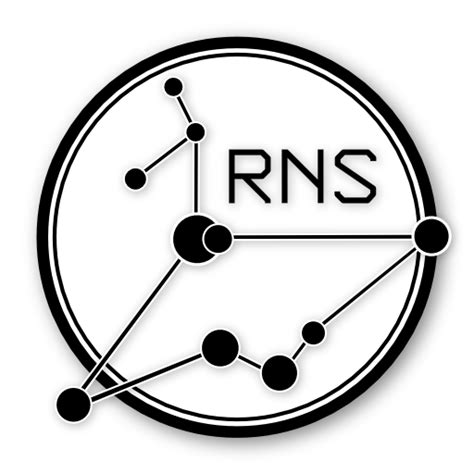:: RNODES OVERVIEW ::

Rnodes are hardware implementations or devices specifically designed to run the Reticulum Network stack. They serve as the physical nodes that form the backbone of a Reticulum mesh network, providing the necessary radio or wired interfaces and computing power to route and process Reticulum traffic.
// HOW IT WORKS //
An Rnode is essentially a small computer (often an ESP32, Raspberry Pi, or similar embedded system) equipped with one or more network interfaces (e.g., a LoRa radio module, Ethernet port, Wi-Fi). It runs the Reticulum software, which transforms it into a network router and endpoint for the Reticulum overlay network. Rnodes continuously listen for, forward, and process Reticulum packets, contributing to the overall network's reach and resilience.
- Dedicated Hardware: Often custom-built or optimized devices for running Reticulum.
- Multi-Interface Support: Can be configured with various radio or wired interfaces to connect to different parts of the network.
- Autonomous Operation: Once configured, Rnodes can operate independently, routing traffic without constant human intervention.
// KEY FEATURES //
- Physical Network Backbone: Provide the physical infrastructure for Reticulum networks.
- Flexible Deployment: Can be deployed in diverse environments, from remote wilderness to urban settings.
- Low Power Consumption: Many Rnode designs, especially those based on ESP32, are optimized for battery-powered operation.
- Community-Driven Designs: Various Rnode designs and implementations are often shared and developed by the Reticulum community.
// USE CASES //
- Extending Reticulum Network Range
- Creating Permanent Mesh Network Infrastructure
- Building Custom Secure Communication Devices
- Supporting Remote IoT Deployments
// GET STARTED //
To get started with Rnodes, you typically need:
- A compatible embedded development board (e.g., ESP32, Raspberry Pi).
- Necessary radio modules (e.g., LoRa) or network interfaces.
- The Reticulum software installed and configured on the device.
- Power source (battery or external power).
For more information on Rnode designs and how to build or acquire them, refer to the Reticulum Hardware Documentation and community resources.
:: RETICULUM NETWORK PROJECT OVERVIEW ::

Reticulum is a versatile, resilient, and secure mesh networking stack designed for robust, censorship-resistant communication. Unlike simpler messaging-focused mesh projects, Reticulum provides a complete cryptographic network stack that can operate over virtually any underlying medium, enabling complex, multi-protocol mesh networks.
// HOW IT WORKS //
Reticulum creates an overlay network, meaning it builds its own logical network on top of existing physical connections (like LoRa, Ethernet, Wi-Fi, Packet Radio, or even serial lines). It handles all aspects of addressing, routing, and encryption, allowing applications to communicate securely and reliably across diverse and intermittently connected networks. Messages are cryptographically addressed, ensuring end-to-end security and privacy.
**Important Note on Bandwidth and Latency:** Reticulum's performance is dependent on the underlying physical medium. While it can operate over high-bandwidth links, when used with low-bandwidth technologies like LoRa, it is **not suitable for voice calls, video streaming, or high-speed internet browsing.** Messages may also experience noticeable delays (latency), especially over multi-hop paths or unreliable links.
- Multi-Protocol Support: Can operate over various physical layers including LoRa, Ethernet, Wi-Fi, Packet Radio, and more.
- Cryptographic Addressing: All communication is addressed and secured using strong cryptography, ensuring privacy and authenticity.
- Self-Healing Mesh: Automatically discovers routes and adapts to network changes, providing high resilience.
- Application-Layer Focus: Provides a robust foundation for building secure, distributed applications.
// KEY FEATURES //
- Highly Resilient: Designed to withstand disruptions and operate effectively in challenging environments, including off-grid scenarios.
- Censorship-Resistant: Its decentralized and encrypted nature makes it difficult to monitor or block communications.
- Secure by Design: Incorporates strong encryption and authentication at its core.
- Flexible & Extensible: A powerful toolkit for developers to create custom mesh networking solutions and applications.
- Cross-Platform: Runs on a wide range of hardware, from small embedded devices (like Rnodes) to desktop computers.
// USE CASES //
- Secure Off-Grid Communication & Messaging
- Resilient IoT Networks & Remote Sensor Deployments
- Distributed & Decentralized Applications
- Experimental Networking & Research
- Emergency Communications & Disaster Relief
// GET STARTED //
To get started with Reticulum, you typically need:
- A compatible device (e.g., an Rnode, Raspberry Pi, or a computer) capable of running Python.
- A supported physical interface (e.g., LoRa radio, Ethernet adapter, Wi-Fi).
- The Reticulum Python library installed on your device.
- Configuration of Reticulum to define network interfaces and identities.
You can find more detailed information, guides, and community support on the official Reticulum Network website and its GitHub repository.

